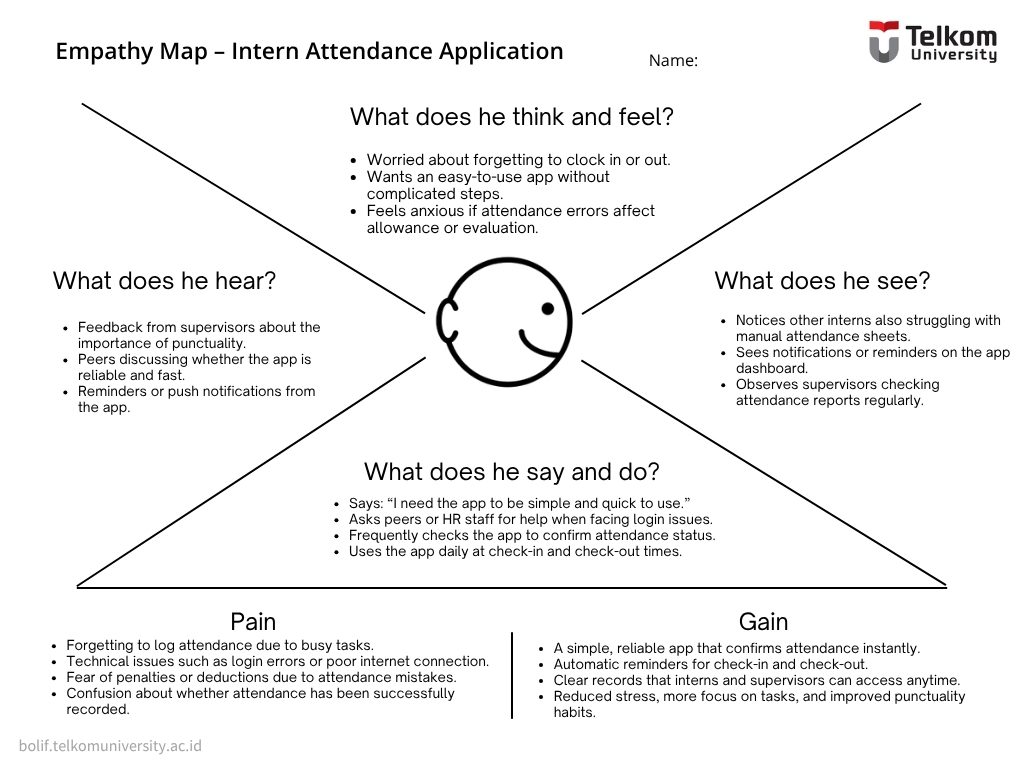
Empathy Map: A Tool for Understanding User Experiences
An empathy map is a visual tool collaboratively used to understand user experiences. It illustrates four main dimensions of what users say, think, do, and feel in their interactions with a product or service.
In the design thinking process, deeply understanding the user is a crucial first step. One of the proven tools to achieve this is the empathy map. With a simple visual approach, the empathy map helps product, design, and marketing teams align perspectives, analyze user behavior, and identify insights based on real data, not mere assumptions (Nielsen Norman Group, n.d.).
As a visual thinking tool, the empathy map makes it easier for organizations to transform research data into actionable empathetic understanding, thereby supporting more targeted design and product development strategies (Interaction Design Foundation, n.d.).
What Is an Empathy Map?
An empathy map is a collaborative visual tool used to summarize the user experience in four dimensions: what they say, think, do, and feel about a product or service (Interaction Design Foundation, n.d.).
According to Nielsen Norman Group (n.d.), the empathy map functions to integrate qualitative data into one visual document that is easily understood by the entire team. This tool is often used in the early stages of design thinking to build empathy, uncover insights, and serve as a foundation for creating user personas (fictional profiles based on real data).
Structure of an Empathy Map
The classic empathy map is divided into four main quadrants (Interaction Design Foundation, n.d.):
| Quadrant | Explanation |
|---|---|
| Says | User statements from interviews, surveys, or discussions. |
| Thinks | User’s internal thoughts or perspectives that are not always expressed. |
| Does | Actual user behavior when using a product or service. |
| Feels | Emotions or feelings that influence user decisions and experiences. |
Modern versions often add Sees (what the user sees) and Hears (what they hear from the environment) to enrich context (Nielsen Norman Group, n.d.).
Why Is the Empathy Map Important?
The empathy map is an essential tool for product and design teams because it:
Aligns Teams: Helps cross-functional teams share a common understanding of users.
Identifies Knowledge Gaps: Helps discover incomplete research areas.
Reduces Assumptions: Enables decision-making based on real research rather than speculation (Nielsen Norman Group, n.d.).
According to QuestionPro (n.d.), the empathy map also strengthens a customer-centric culture, helping organizations understand user motivations and challenges, and facilitating collaboration in data-driven decision-making processes.
In addition, Influx (n.d.) emphasizes that empathy maps can be applied in customer service. By deeply understanding customer frustrations, support teams can deliver more empathetic and relevant service experiences.
How to Create an Empathy Map
Here are effective steps to create an empathy map (Nielsen Norman Group, n.d.; Interaction Design Foundation, n.d.):
Collect User Research Data
Use interviews, surveys, or direct observations to gather insights.Collaborative Workshop
Involve cross-functional team members to fill in the empathy map together.Fill in the Quadrants Based on Real Data
Use sticky notes or digital platforms to organize data.Synthesize Insights and Needs
Identify patterns to design relevant solutions.Iterate and Update
The empathy map should be updated whenever new data emerges to maintain accuracy.
Empathy Map Template
Various platforms provide empathy map template for online collaboration:
Digital templates simplify brainstorming and remote collaboration (Interaction Design Foundation, n.d.).
Example of Empathy Map Application
An e-commerce startup conducted customer interviews and discovered the following insights:
Says: “I often get confused when choosing clothing sizes.”
Thinks: “This brand does not clearly provide sizing guides.”
Does: Reads many reviews before purchasing a product.
Feels: Frustrated when the size does not meet expectations.
These findings prompted the company to create an interactive sizing guide feature and a more flexible return policy. Insights like this highlight the crucial role of empathy maps in creating solutions based on actual user needs (Nielsen Norman Group, n.d.).
Practical Tips for Using Empathy Maps
Focus on Real Data: Avoid assumptions without research.
Engage Cross-Functional Teams: Collaboration improves the quality of insights.
Keep It Simple and Focused: Prioritize essential information.
Update Regularly: Empathy maps must remain dynamic.
Use Engaging Visuals: Helps make team discussions more effective (Interaction Design Foundation, n.d.).
Conclusion
The empathy map is a foundational design thinking tool that helps teams comprehensively understand user experiences and motivations. With a simple structure and research-based approach, empathy maps strengthen customer-centric culture, minimize assumptions, and serve as a basis for innovation (Nielsen Norman Group, n.d.; QuestionPro, n.d.).
Beyond design teams, empathy maps can also be used by customer service teams to better understand user frustrations, thus creating more empathetic and personalized experiences (Influx, n.d.).
Learn more about design thinking and user research at Telkom University. Discover insights and best practices for building truly user-centered products and services.
References
Influx. (n.d.). What is a customer empathy map & why is it important? Retrieved September 2, 2025, from https://influx.com/blog/empathy-mapping-customer-support
Interaction Design Foundation. (n.d.). Empathy map: Why and how to use it. Retrieved September 2, 2025, from https://www.interaction-design.org/literature/article/empathy-map-why-and-how-to-use-it
Nielsen Norman Group. (n.d.). Empathy mapping: The first step in design thinking. Retrieved September 2, 2025, from https://www.nngroup.com/articles/empathy-mapping/
QuestionPro. (n.d.). What is an empathy map? Definition and importance. Retrieved September 2, 2025, from https://www.questionpro.com/blog/empathy-map/
Writer: Junianda Haris Dwiagam | Content Research & Editor: Meilina Eka Ayuningtyas

